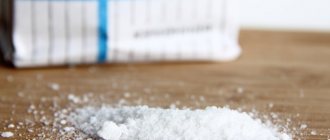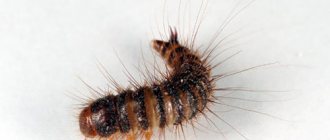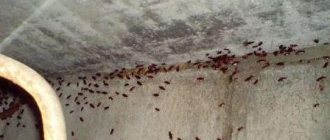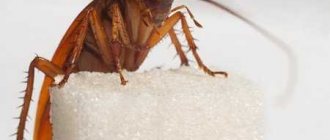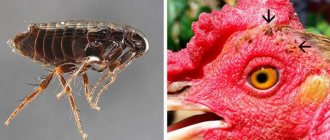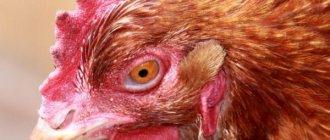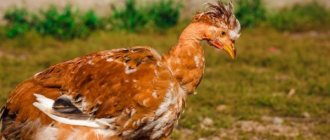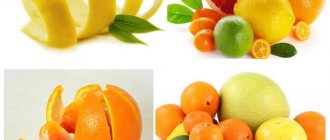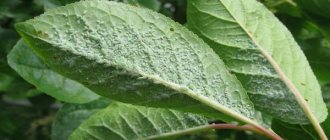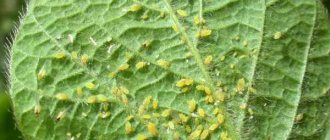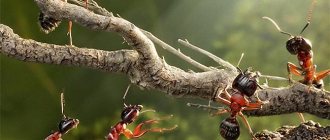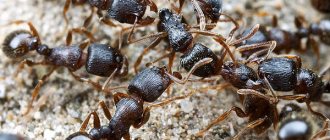Fleas are annoying blood-sucking parasites of warm-blooded animals and humans. Four-legged family members - dogs, cats, ferrets, rabbits and others - inevitably become hosts and carriers of fleas. This causes a lot of concern: painful bites, obsessive itching, irritation, dermatitis, and the risk of infectious diseases.
The flea life cycle consists of 4 stages: egg, larva, pupa and adult. To rid an infected room of them, it is necessary to destroy all stages. Fearing the toxicity of chemicals - a powerful weapon against insects - some people prefer folk remedies for fleas in the house. Over the years of centuries-old fight against fleas, humanity has accumulated considerable experience. How to wash the floor, treat an animal, protect against bites - there is a folk remedy for household fleas for any occasion. How to get rid of infection and prevent recurrence - let's break it down.
Salt
This simple remedy will help you get rid of fleas in carpets at home. Salt is famous for its dehydration properties. In contact with salt, the outer coverings of fleas are destroyed, the insects lose vital moisture and, as a result, die. To use this folk remedy you will need:
- Table salt or sea salt (the amount of salt depends on the area to be treated)
- Salt shaker or spice jar with holes
The procedure is as follows:
- If the salt is coarse, grind it before use.
- Pour the salt from the bag into a jar, leaving enough space up to the lid with holes so that the salt spills freely
- Sprinkle salt on the carpets in each room, rubbing lightly so that the crystals penetrate into the base of the pile where the larvae and pupae hide.
- Leave for 1-3 days
- Then vacuum the carpets thoroughly
Soda
It is used in a similar way, but the difference with soda is that it acts on larvae and eggs. In combination with salt, these folk remedies destroy the visible and invisible stages of flea development. The method is inexpensive and safe even for children and pets. Moreover, every housewife has salt and soda, and their use does not require complex preparations.
A mixture of salt and soda is used to treat carpets, rugs, animal bedding and upholstered furniture on which a dog or cat periodically lies.
- Check the expiration date of baking soda: if there is no packaging left with the date, just add 2-3 drops of vinegar to a spoon with soda - if bubbles appear, then the soda is still good
- Mix baking soda and salt in equal proportions
- Apply the mixture evenly to the carpets using a brush or broom
- Leave the mixture overnight and vacuum up the next morning.
- Repeat the procedure every 4 days for two to three weeks.
Sagebrush
This is an ancient, proven folk remedy for fighting insects. To get rid of fleas, they hung freshly picked grass in the house, then learned how to obtain essential oil, the pungent smell of which repels insects. To this day, the tradition of using wormwood remains in demand.
Wormwood is found in tincture form, as freshly harvested plants, essential oil, or ground herb. Each of them is used as a folk remedy for fleas. It should be noted that the strong odors of plants do not kill, but only repel fleas.
Wormwood tincture for fleas
The product helps get rid of parasites and protect your family and pets from diseases carried by fleas. The tincture dissolves in water and is used to clean floors against fleas. It is also used to treat the hair of dogs and cats. The tincture is sold at the market or in a pharmacy. To prepare the tincture yourself, pour crushed dry wormwood with vodka and let it brew for two weeks.
Wormwood oil for fleas
Wormwood oil works by releasing aromas that repel fleas and other insects without killing them. The skin and fur of the animal are treated with wormwood oil, and bowls with oil are placed on the floor around the apartment.
Wormwood oil is available in pharmacies. To prepare this folk remedy yourself, pour dried crushed wormwood with olive oil in a small jar. Shake the mixture well and put it in a dark place for 10 days. After straining, the oil is ready for use.
Wormwood decoction for fleas
To prepare a decoction of wormwood at home
- Grind freshly harvested or dried herbs
- Place in a saucepan of boiling water and boil for 5 minutes
- Leave to cool
The resulting decoction is suitable for treating animals, as well as bedding, furniture, carpets and cleaning floors against fleas.
The insecticidal properties of wormwood are beyond doubt; it is used in agriculture, grown near potato and carrot fields to repel pests. So to combat seasonal flea infestations, you can grow mugwort in your yard or even inside your home.
But wormwood is a strong allergen, so be careful. For those who are prone to plant allergies, this folk remedy is not suitable. Do not use wormwood for medicinal purposes without consulting a doctor; for some, it causes unwanted reactions in the body.
Laundry soap
Laundry soap in the Soviet Union was made according to certain standards and was available in every home: it was used for washing dishes, washing clothes, washing the body and head. One inexpensive soap replaced a huge number of different detergents. This is due to its composition.
Laundry soap contains only sodium or potassium salt and fatty acids. If you add dyes and essential oils to them, you can get toilet soap. If you add various thinning components and, for example, SLS, you can get a well-foaming shampoo alternative. Thus, only two components included in laundry soap are the basis of any cleaning chemical product, so it was used wherever possible.
Laundry soap indicates the percentage of acids
Laundry soap has a percentage designation: 72% means that the product contains the maximum amount of acids. This is a natural, environmentally friendly soap.
The saturated fatty acids included in this product (stearic, palmitic, lauric, and so on) improve the properties of soap to form foam and exhibit washing abilities in both cold and hot water.
If your hands remain sticky after using laundry soap, it contains rosin. This substance promotes the formation of foam and dissolution of the product in cold water, and also increases the shelf life of the soap. If you add sodium silicate to the product, the stickiness will disappear.
If you add bleach to laundry soap, it will turn white.
Now liquid laundry soap has appeared on the market, which has nothing in common with solid laundry soap except the name. It contains toxic substances that can corrode the skin.
Laundry soap not only cleans surfaces well from dirt, but also has antimicrobial properties, so it is often used in medicine in the absence of certain drugs.
After washing the wound, you need to apply gauze soaked in a soap solution. on the wound
Advantages of this product:
- environmentally friendly hypoallergenic product;
- high alkaline balance;
- has antimicrobial properties;
- low cost;
One of the advantages and disadvantages of this product is that due to its high alkaline balance, this soap cannot be used often for washing: alkali harms the skin, and the epidermis loses its elasticity and becomes dry.
Laundry soap has a rather specific smell that is unpleasant even to people, not to mention various insects. Small parasites (for example, fleas) will try to quickly run away from the source of this “amazing aroma.” Laundry soap does not destroy insects, it only repels them, so they can leave your pet, but they will jump around the bathtub and clothes - here you need to kill them.
Also, do not forget that our pets have a different pH level, so their skin may experience irritation from using laundry soap.
against fleas, I can recommend to you (based on my experience) a common, well-known and also very economical remedy called “Laundry Soap”, by the way, it is good at removing not only fleas from animals, but also lice and nits from people.
ksenko
https://www.lynix.biz/forum/kak-izbavit-koshku-ot-blokh-isklyuchiteln0-narodnymi-sredstvami
Essential oils for fleas in the apartment
The use of essential oils against fleas and other pests in the apartment reduces the level of chemical use. Some oils are suitable for direct contact with skin, while others are intended for use on clothing and indoor surfaces. Use essential oils with caution in the presence of children or pregnant women. As a rule, 25 drops of oil are diluted in 5 liters of warm water.
Lavender for fleas
It is an all-purpose insect repellent with a sweet scent. Scientific testing of lavender against the four stages of flea development at Ohio University confirmed its effectiveness. The oil is prepared by distilling the Lavendula officinalis herb.
This folk remedy is used to treat pets, bedding, rugs and rugs.
In 2007, one study in South Africa noted that solutions containing 20-30% lavender were comparable in effect to the use of diethyltoluamide. Although fleas are not killed by lavender, they cannot tolerate it.
Eucalyptus for fleas
Eucalyptus oil emits a characteristic methanol odor that repels fleas. Typically used in conjunction with other oils, such as citronella oil. The habitats of pets in the apartment are treated with an aqueous solution of eucalyptus oil. Eucalyptus does not kill, but only repels fleas.
Pennyroyal
Dry pennyroyal leaves contain 3% essential oil. This oil, known since ancient times, belongs to the mint genus. Sprinkling freshly picked or dried crushed plants around the house to repel insects is a proven folk remedy for fleas. Application to the skin or fur of animals is contraindicated, as toxic consequences may develop.
Lemongrass
This aromatic herb belongs to the grass family. Lemongrass is common in southeastern Asia and Australia. Lemongrass essential oil is also used as a repellent.
Cedar oil
Cedar oil is obtained by cold pressing the peeled kernels of the nut. Unlike other oils, cedarwood oil has both repellent and toxic effects on fleas. The safety of using this folk remedy for pets is controversial - to avoid undesirable consequences, it is recommended to use low concentrations of oil.
Basil oil
The repellent effect of basil oil on fleas is based on its persistent, specific aroma. This folk remedy for fleas in the apartment is safe for the health of people and animals.
Thyme oil
Thyme in its pure form is used as an insecticidal, fungicidal and bactericidal agent - it has a toxic effect on insects, fungi and bacteria. Put some thyme oil on your pet's collar and fleas will leave him alone.
Rosemary oil
This product is intended to protect only dogs as it is toxic to cats. Rosemary oil has repellent and antiseptic properties, making it ideal for washing dogs whose skin has developed a reaction to flea bites. The oil will help restore the skin and drive out fleas.
Clove oil
Just like rosemary oil, clove oil is contraindicated for cats. Apply a couple of drops of oil to your dog's collar and add to the water when washing your pet's bedding.
Tea tree oil
This folk remedy will help get rid of fleas and fill the room with a pleasant aroma. For animals it is used in the form of drops on the withers, including cats. Apply one drop the first time and observe how the animal feels, then, if everything is fine, apply another 4-5 drops
Washing dogs with soap
With dogs, the situation is much simpler - they are not afraid of water, they themselves climb into it when they see it on the street, even when it’s cold. Therefore, taking a bath for a dog should not cause any problems, but it is worth remembering the characteristics of small dogs: they are very weak, they do not have thick hair, so they, like cats, need to be washed in warm water in a pre-heated bath so that they do not freeze .
Small dogs should not be washed in cold water
The process of washing dogs with soap is as follows:
- It is necessary to wet the animal’s fur (you also don’t have to touch the head).
- Lather the soap until a large amount of foam forms.
- Rub the animal's fur with this foam. Soap should not get into your eyes, nose, ears or mouth.
- Wait a few minutes, then rinse off the soap thoroughly.
- If the dog has thick, long hair, you need to lather it again with soap and wait a few minutes, then rinse it off.
Dogs with dry and thin skin should be washed with extreme caution. Dust soap can be used only once every few weeks, so that DDT does not accumulate in the body, and tar and laundry soap can be used several times in a row, with a difference of several days.
Tar soap for fleas
The composition of tar soap includes sodium salts, citric acid, table salt, thickeners and the main component - birch tar.
Tar is a thick black liquid with a pungent odor and bactericidal, anti-inflammatory and insecticidal effects. Tar soap relieves itching and irritation. This is a natural folk remedy and it is inexpensive.
Tar is available in the form of solid and liquid soap, as well as shampoo. It is more convenient to treat pets with liquid products. But if you use hard soap, then first soak the bar of soap in water until foam forms. Tar soap is also used for washing floors, treating walls and washing pet accessories against fleas.
However, the use of tar soap requires moderation. According to a study by the New Zealand Skin Diseases Association, there was an increased risk of skin cancer associated with the use of tar soap in animals, but there was no effect on humans.
Video “Bathing a cat with tar soap”
Treating cats with soap
Cats are very finicky creatures who do not like to take baths. If households who do not go outside are unlikely to catch any infection, then street revelers are very susceptible to this, and after each walk they need to be washed and treated. After all, if they have worms, people can also become infected with helminthiasis.
Cats have a special relationship with water: don’t touch this wet liquid! There are, of course, exceptions who love to swim, but they are too few.
Some cats favor baths
Therefore, washing a water hater usually requires two adults - one holds it, the other washes it. In addition, you must follow a number of rules for bathing cats:
- before bathing, you need to heat the bath so that it is not cold, and fill it with water so that it is up to your pet’s chest; if you have a basin, fill it with warm (38–43 degrees) water (so that it only reaches the cat’s chest) and place the cat in it; Do not wash in a cold bath or with cold water - the pet may get sick;
The cat must stand firmly on its paws, the water must be up to its chest, not higher, so as not to choke. - water should not get into the ears, eyes, nose and mouth; It is quite enough to wash the entire body except the head;
- you need to be extremely careful with the stomach - this is a very delicate area, behind which vital organs are located, and powerful jets of water into this area can trigger the animal’s instinct of self-preservation;
The stomach of cats is a very delicate and important area, you need to be very careful with it, especially if you wash the cat from the shower - some cats are very restless in the water: they can break out, some reach the taps with their paws and can accidentally turn them, trying to get out, this should not be allowed - either the water will be too hot or too cold, which will harm both the animal and you;
A frightened cat can easily turn on the taps and let in very hot or too cold water. - after the bath, the cat must be wrapped in its own towel so that the water is absorbed into it;
The less water on a cat's fur, the faster it will dry and the less likely it is to get sick. - place the pet in a warm place (to the radiator, pick it up or send it to the balcony under the hot rays of the sun) - it should not freeze;
These are the basic rules for bathing a cat. As for the actual washing, everything is quite simple:
- First you need to wet the animal’s fur (you don’t have to touch the head).
- Lather the bar of soap until it lathers.
- Rub the wool with this foam. Soap should not get into the mouth, nose, ears and eyes; To do this, do not wash your pet’s head, keep it elevated so that foam from the neck does not get into the mouth.
- Wait 3-5 minutes for the soap to take effect. The pet should not lick itself at this time - if soap enters the body, it will cause poisoning.
- Rinse off the foam thoroughly.
- Wrap the cat in a towel and let him warm up.
If laundry and tar soap can be used for pregnant and lactating cats, then dust soap should absolutely not be used for them.
Small kittens (up to a month) cannot be washed with any soap, and dust can only be used after one and a half months.
Cats should be washed with laundry or tar soap at least twice with a 4-7 day interval between procedures. If you use dust soap, once is enough.
Vinegar for fleas in the apartment
Vinegar is used in everyday life for cleaning and odor removal, to remove ants in the kitchen, and in the garden as an insecticide and herbicide. Vinegar is known as a deodorizing agent for dogs and cats and, of course, as a folk remedy for fleas. In this case we are talking exclusively about apple cider vinegar! Apple cider vinegar does not kill fleas, but it does create an inhospitable environment that drives them out.
“Both fleas cannot tolerate the smell or taste of vinegar, which means they will not stay on an animal that smells like apple cider vinegar. Vinegar is more suitable as a preventative rather than a therapeutic agent for animals."
Darcy Matheson, Greening Pet Care
Dousing a bottle of apple cider vinegar on your dog will not magically make the fleas disappear. There are many known uses for this natural repellent, for example, as an additive to drinking water, in the form of a spray or a bath.
- Bath: Mix 1 cup of apple cider vinegar and 1 liter of warm water and treat your pet with the resulting solution.
- Drinking water: Add a teaspoon of apple cider vinegar to 1 liter of water and stir. Your pet will not like the drink at first, but over time he will start drinking it.
- Spray: Mix two cups of water and two cups of apple cider vinegar. Pour the solution into a spray bottle and thoroughly treat the animal with the solution from head to tail and do not rinse, the smell of vinegar will disappear as soon as the fur dries.
Dust soap
Dust soap is a regular laundry soap that contains dichlorodiphenyltrichloromethylmethane (DDT for short). This is a toxic substance that can penetrate the chitinous cover of insects. DDT accumulates in the body of an arthropod and, at a certain concentration, kills the pest. That is why it is often used to combat lice and fleas.
DDT can kill parasites on the human body
A special feature of DDT is its ability to penetrate through the shell of eggs, not only through the chitinous cover, so the poison accumulates in the body of unhatched “cubs”, thereby destroying the entire population of parasites at once. Thanks to this, dust soap is more effective than many other products.
In addition to this poison, dust soap has a sharp, terrible odor that frightens insects and makes them run away from the source of this “aroma.” Thus, the parasites leave the body of an animal washed with dust soap either alive, frightened by the smell, or dead - straight to the next world.
DDT will kill even a malaria mosquito
DDT perfectly destroys not only lice and fleas, but also other insects. For example, thanks to this substance, it was possible to save about 10 million people in India from a malaria epidemic carried by mosquitoes.
If you need to wash an animal or person at least twice with laundry and tar soap, then one procedure with dust soap is enough. Moreover, doctors strongly discourage frequent use of this product, since DDT accumulates in both the human and animal body, which can lead to intoxication.
Dust soap looks similar to laundry soap
Dust soap is strictly prohibited for use by pregnant women (both women and female animals), since DDT can cause various pathologies in the fetus. Also, it cannot be used for children (in the case of animals - up to one and a half months), since the substance can disrupt the functioning of the nervous system and brain. Children's immune systems are weak and there is a risk of developing cancer.
Benefits of this soap:
- with one-time use it has a calming effect;
- penetrates the chitinous cover and shell of insect eggs, killing them;
Disadvantages of this product:
- high level of toxicity;
- DDT can accumulate in the human and animal body and lead to serious damage to many body systems;
- dangerous for children (both human and animal);
We tried all the remedies in the veterinary pharmacy. Dust soap for 6.50 UAH. the only thing that killed all the fleas))) The packaging says what to do and how to do it. No sprays, drops, or collar helped. No matter what anyone writes about other means. Everything else is a waste of funds! Dot.
nata
https://www.woman.ru/home/animal/thread/4312013/
Boric acid for fleas
Boric acid is a low-toxic inorganic mineral with insecticidal, fungicidal and herbicidal properties. Serves as the basis for a number of commercial pest control products. Boric acid causes loss of moisture in the body of insects, dehydration occurs, and the insect dies.
It does not emit an odor and therefore does not repel, but kills fleas, maintaining an insecticidal effect for a long time.
Boric acid is used as follows:
- Remove toys and other things from the floor of the room being treated
- Vacuuming your carpets to remove dirt and dust will improve the quality of the finish. If necessary, do wet cleaning
- Sprinkle boric acid powder onto carpets and rugs, paying special attention to areas where your pet spends time.
- Using a brush, spread the powder evenly over the carpet
Boric acid kills flea larvae, but has a weak effect on adult fleas, so a noticeable result will appear in 2-6 weeks, until the adult population dies. 48 hours after treatment, clean with a vacuum cleaner. Although boric acid is a long-lasting treatment, repeated treatments will be required.
Boric acid has almost no side effects, except for mild skin and eye irritation. Use in the garden is not recommended due to toxicity to beneficial plants and birds.
Recommendations for daily routine and nutrition
The consequences of alcoholic libations do not end, even if at some point you feel in good shape. Alcohol continues its negative effects and burdens the body. Therefore, it is so important to follow the diet and nutrition recommendations in order to recover with minimal losses to health.
First of all, you need good, sound sleep. The body needs quality rest and sleep is the right option to provide it. Next - fresh air. If you are at work during the day, then in the evening, no matter how much you want to go to the couch, be sure to take a walk for at least one hour. If it's a day off, you can spend more time walking.
Nutrition should also be gentle. Your stomach and liver have already received a significant blow, so it’s definitely not worth tormenting them with fatty, spicy and smoked foods. Light chicken broth, kefir, porridge, boiled white meat or fish - this is your diet for the next couple of days, until ethanol completely leaves the body.
Pyrethrum for fleas
Pyrethrin is a natural insecticide obtained from the raw extract of the chrysanthemum (Pyrethrum). It has been used for pest control since ancient times and is considered safe. Pyrethrum is available in powder or spray form. Pyrethrum is a neurotoxic insecticide. It is also known to have insect repellent properties. Used as a base ingredient in a number of commercial flea and tick products, mainly powders and sprays.
How to sober up quickly in the morning
You can save yourself from the painful symptoms of a hangover if you take some measures in the evening to quickly sober up in the morning.
- After a feast accompanied by heavy drinking, you need to do a gastric lavage. To do this, upon returning home, you should drink as much water as possible and induce artificial vomiting.
- After this, you need to take sorbents: activated carbon, polysorb, enterosgel. Sorbents can be taken before or during a feast.
- If there is strong alcohol on the table, do not forget about a snack to neutralize the effects of alcohol. It is best to eat a large meal before drinking alcohol.
- In the morning, take the sorbents again. Let us remind you that activated carbon is taken at the rate of 1 tablet per 10 kg of weight, other medications are taken as prescribed.
- A light breakfast is recommended - porridge, fermented milk products, sweet tea.
- A cool or contrast shower will improve the condition.
- Don't forget about water: a large amount of liquid will help remove alcohol from the body and quickly sober up.
If you control the amount you drink the day before and follow some simple tips, you can save yourself from the symptoms of a severe hangover.
However, if nothing helps, then the advice is this: call the clinic and have a doctor come to your home, he will help you sober up quickly and safely in a short time.
Click here to view the conditions, tariffs and prices for treatment
Bleach for fleas
The fight against fleas often drags on for a long time. This is because most flea treatments do not kill eggs. The final extermination of the population requires exposure to all life stages of flea development. Bleach is suitable for killing eggs. Treat carpets and pet habitats with a solution of bleach and water. Add chlorine bleach when washing pet accessories.
But this method requires extreme caution. Chlorine is toxic if ingested, so do not allow your animal to come into contact with the treated surface. When treating carpets and textiles, keep in mind that bleach acts as a bleach.
Emergency methods of sobering up - help from a narcologist, IV drips
The fastest and most effective way, if you need to quickly sober up, is the help of a narcologist. Our specialists can come to your home; this service is completely anonymous.
A detoxification drip is selected individually for each person; we take into account all parameters, including the person’s weight and age, not to mention current diseases and intolerance to any drug.
The dropper will quickly cleanse the body of ethanol and its breakdown products, restore water, electrolyte and acid-base balance. Additional medications work to restore the body after a serious alcohol load. Obviously, not a single folk method, no matter how effective it may seem, can replace a professional IV. Only infusion-drug therapy can completely rid the body of ethanol breakdown products and help a person sober up.
Tansy for fleas
There are 30 types of tansy growing in Russia. An essential oil containing camphor and thujone is obtained from it. Thujone is subject to strict maximum concentration limits in oils and other products because it is toxic. To prepare flea repellent, place tansy leaves and flowers in a bucket, add hot water and let sit. The resulting solution is used to treat dog and cat accessories, as well as to wash the floor.
Despite the wide selection of folk remedies for fleas, in some cases, ready-made medications are required for animals. Purchase flea medications from veterinary pharmacies after consultation with a veterinarian.
